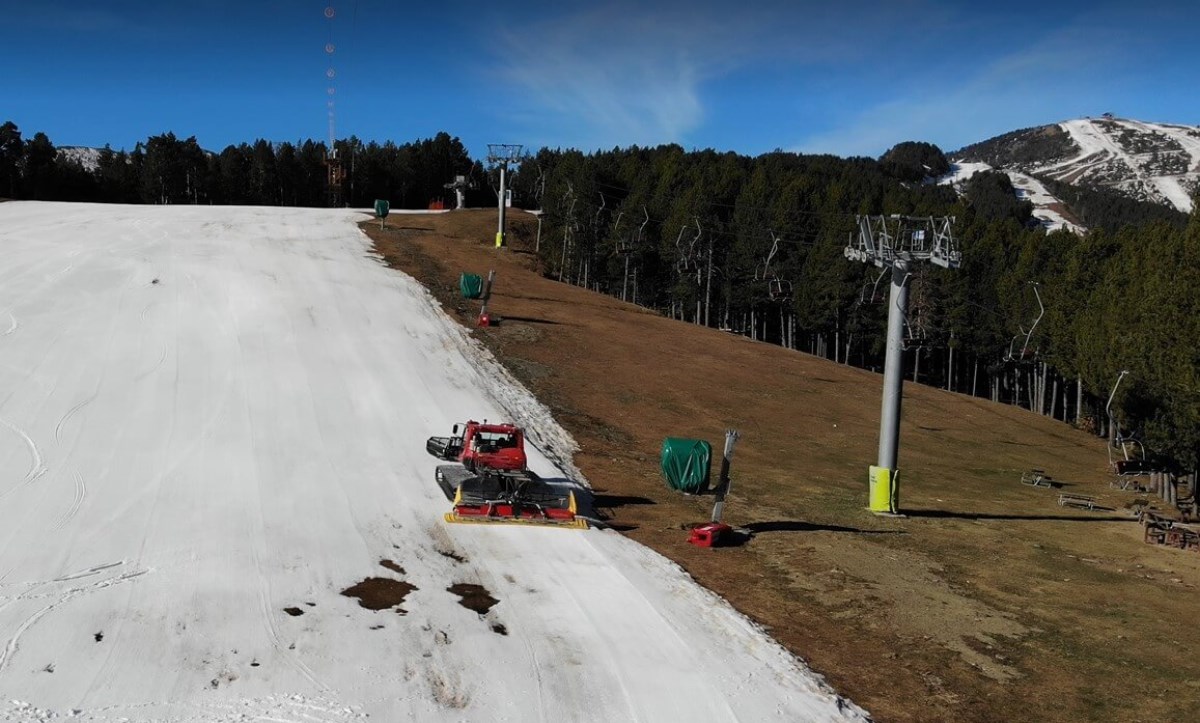Projects

Snow tourism is an economic sector of great importance in the high mountain areas of the Pyrenees, and also one of the most vulnerable to climate change. The NIVOPYR research project [1] is an international initiative of the Working Community of the Pyrenees (CTP), aimed at assessing the influence of climate change on the evolution of snow tourism, and more specifically on alpine skiing in the Pyrenees.
Mountain areas have been identified as regions particularly vulnerable to the effects of climate change and as areas of great interest for the detection and assessment of possible impacts. In recent decades, winter tourism, highly sensitive to changes in weather and snow availability, has become one of the main economic activities in mountain areas and plays a key role as a source of income and local development. Knowing how climate change affects this sector and defining adaptation strategies are the main challenges faced by the NIVOPYR project. This research project is developed on the 49 most important alpine ski resorts in the Pyrenees, concentrated in a central area limited in the west by La Pierre Saint-Martin (Nouvelle Aquitaine) and in the east by Vallter 2000 (Catalonia).
The main objectives of the NIVOPYR project are:
- To develop an analysis methodology specific to the Pyrenees region to integrate existing knowledge on present and future patterns of temperatures, precipitation, snow cover and skier behavior.
- To better understand and objectively link the possible changes on the snowpack and future snow production capacities with the vulnerability resulting from the ski resorts in the Pyrenees.
- Study the potential impacts on the different ski resorts in the Pyrenees and analyze the most appropriate adaptation strategies for each type.
The main results of the NIVOPYR project are presented below.
- A detailed study has been carried out on the different types of ski resorts in the Pyrenees according to their degree of vulnerability (definition of three different profiles) and they have been characterized in detail [2].
- A guide of recommendations has been elaborated with measures for the adaptation of the ski resort sector to climate change.
Some of the actions proposed for the different types of stations are presented below:
- For the most resilient ones: technical adaptation measures to guarantee their activity (preparation of the trails and use of artificial snow production).
- For the most vulnerable: more structural solutions are required (promotion of complementary activities, improvements in communications, deseasonalization or, in the most extreme cases, a complete change of activity towards a new model of sustainable tourism, focused on activities that do not depend so much on snow resources and are more oriented towards summer mountain tourism).
- In general terms, it is necessary to trend towards diversification measures during the skiing period and towards improvements in the snow management systems.
[1] M. Pons et al., “Influencia del cambio climático en el turismo de nieve del Pirineo. Experiencia del proyecto de investigación NIVOPYR,” Pirineos, vol. 169, Dec. 2014.
[2] M. Pons, P. A. Johnson, M. Rosas, and E. Jover, “A georeferenced agent-based model to analyze the climate change impacts on ski tourism at a regional scale,” International Journal of Geographical Information Science, vol. 28, no. 12, pp. 2474–2494, Dec. 2014.

 Laura Trapero
Laura Trapero Marc Pons
Marc Pons